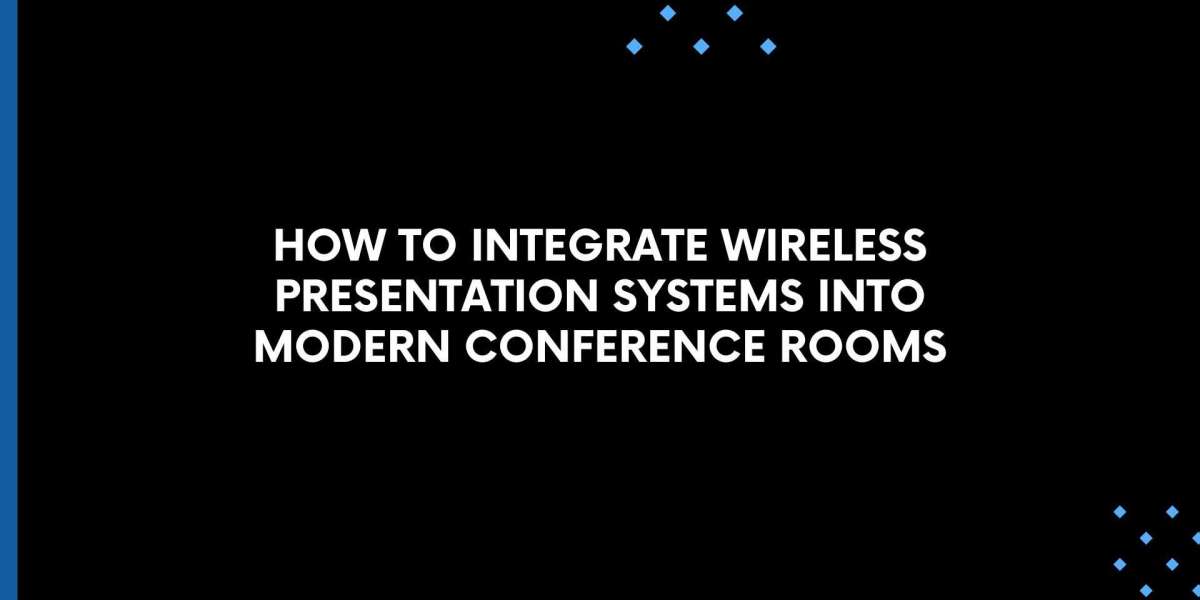The modern workplace has evolved at a rapid pace, with hybrid work models, flexible spaces, and smart technology now shaping the way teams collaborate. At the heart of this evolution is the conference room—a place where both in-person and remote participants come together to share ideas, make decisions, and drive projects forward. In a Modern Conference Room Setup, wireless presentation systems have become essential tools. They eliminate cable clutter, speed up meeting starts, and provide seamless connectivity across devices and platforms. In this blog, we will explore how to successfully integrate wireless presentation systems into your conference room design.
Why Wireless Presentation Systems Matter
Traditional presentation setups often rely on HDMI, VGA, or USB cables to connect laptops and other devices to displays or projectors. These setups can be:
Cumbersome – Searching for the right cable or adapter wastes valuable meeting time.
Messy – Cables running across the table or floor create clutter and potential hazards.
Limited – Users with different devices or operating systems may struggle to connect.
Wireless presentation systems solve these issues by allowing participants to share content instantly from their device—whether it is a laptop, tablet, or smartphone—without plugging in a single cable. This simplicity supports a clean, efficient, and professional meeting environment.
Key Benefits of Wireless Integration in a Modern Conference Room Setup
Cleaner aesthetic – No visible cables means a sleek, minimalist look that aligns with modern office design.
Faster meeting starts – No more hunting for cables or ports. Presenters can connect and share with just a few clicks.
Flexibility – Support for multiple platforms, including Windows, macOS, iOS, Android, and ChromeOS.
Better collaboration – Many wireless systems allow multiple participants to share and view content simultaneously.
Future-proofing – As devices evolve, wireless systems make it easier to adapt without needing new hardware or rewiring.
Steps to Integrate Wireless Presentation Systems
Let us break down the process of integrating a wireless presentation solution into your modern conference room setup.
1. Assess Room Needs and Layout
Start by considering:
The size of the room.
The type of meetings typically held (small team huddles, client presentations, hybrid meetings).
The number of participants who may need to present.
The location of the display or projector.
This will help you choose a system with the right range, performance, and features.
2. Select the Right Wireless Presentation System
Popular wireless presentation systems include Barco ClickShare, Mersive Solstice, Crestron AirMedia, and BenQ InstaShow. When selecting your system, consider:
Compatibility with the devices your team uses most.
Support for guest presenters without needing app installation.
The number of simultaneous presenters supported.
Security features like encryption and PIN access.
A good wireless system should integrate seamlessly into your modern conference room setup without requiring complex user actions.
3. Plan for Network Integration
Wireless presentation systems typically connect to your organization’s Wi-Fi or wired network. It is important to:
Coordinate with your IT team to ensure proper network configuration.
Set up guest networks if external visitors will use the system.
Implement necessary security protocols to protect your content.
Some systems also support direct peer-to-peer connections that do not rely on the building network, which can simplify setup in smaller spaces.
4. Integrate with Display and Audio Systems
Connect the wireless receiver or base unit to your main display or projector using HDMI or another compatible connection. Consider:
Ensuring that the wireless system supports the resolution of your display (Full HD, 4K, etc.).
Connecting audio output to your room speakers for clear sound.
Using an AV switcher if the room has multiple input sources.
Keep connections neat using built-in cable management or discreet conduits to maintain the minimalist look of your modern conference room setup.
5. Test and Fine-Tune
Before rolling out your new system:
Test with different devices and operating systems to confirm compatibility.
Check video and audio quality during presentations.
Adjust settings like screen resolution, audio output, and security as needed.
Simulate a real meeting with multiple presenters to identify any workflow issues.
This ensures that the system works smoothly when meetings go live.
6. Train Your Team
Even the most intuitive wireless system can benefit from a quick introduction. Provide:
Short training sessions or guides on how to connect and share.
Simple instructions near the display or on the table for visitors.
A point of contact for tech support in case of issues during meetings.
Making sure everyone knows how to use the system helps prevent delays and frustration.
Design Tips for Seamless Integration
Use furniture with built-in power and data ports – This allows users to charge devices without adding table clutter.
Mount receivers and access points discreetly – For example, behind displays or under tables to keep equipment out of sight.
Pair with smart lighting and automated room controls – This creates a truly modern, high-tech meeting space.
Plan for expansion – Choose systems that can grow with your organization’s needs.
Final Thoughts
Wireless presentation systems are a must-have in any modern conference room setup. They not only support the technology demands of hybrid work but also help create clean, organized, and future-ready meeting spaces. By carefully selecting, installing, and training your team on these systems, you can eliminate cable chaos, improve collaboration, and deliver a better meeting experience for everyone—whether they are in the room or joining remotely.
Read more: https://social.sktorrent.eu/read-blog/29885








